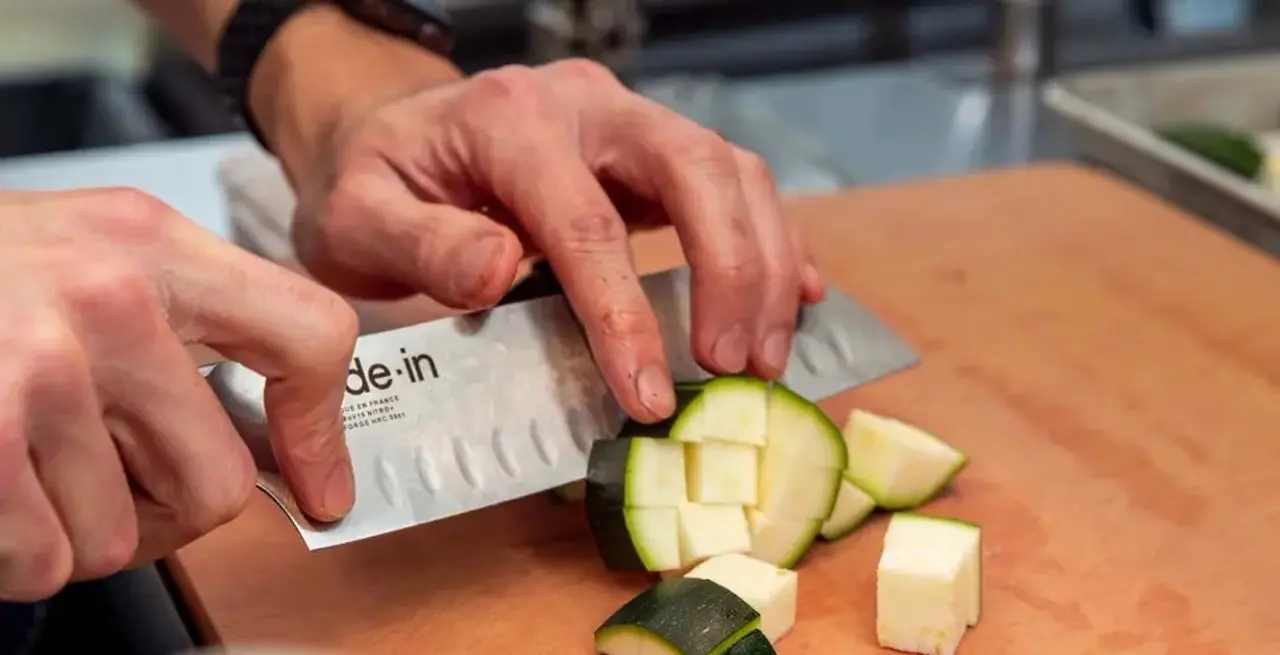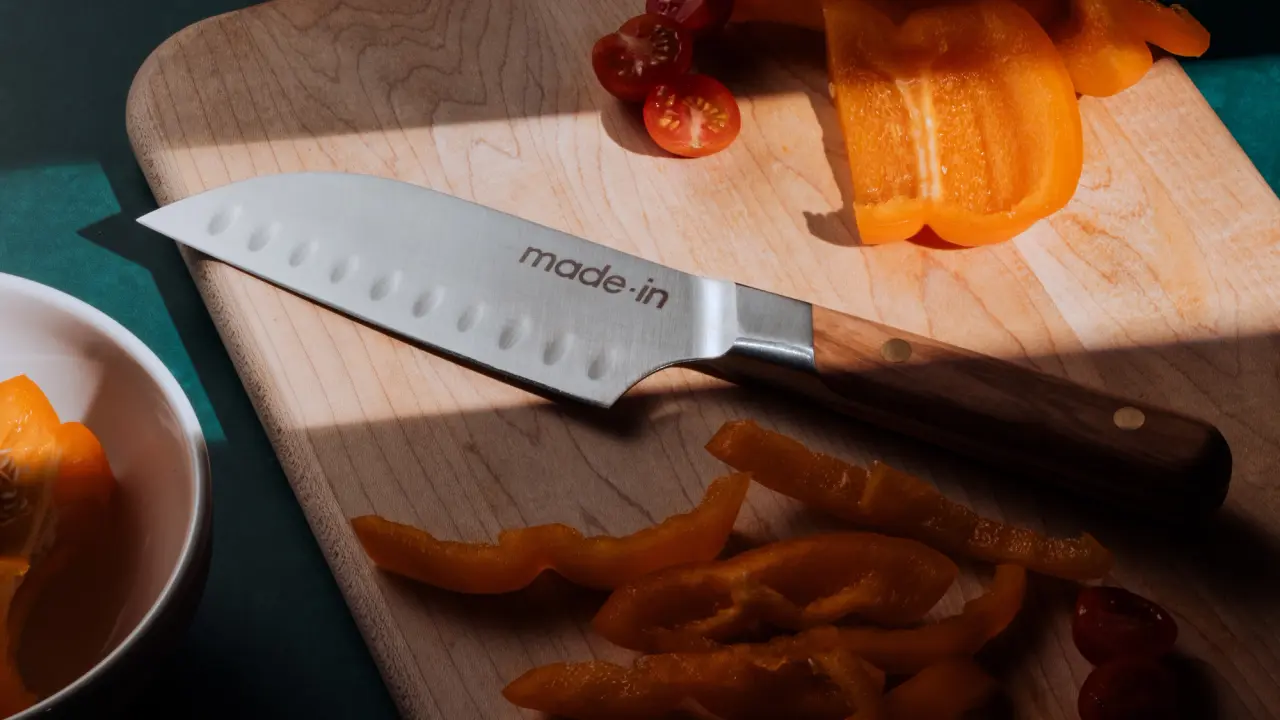Featuring a relatively short, fluted blade with a straight bottom edge and curved spine—often referred to as a “sheep’s foot” blade—santoku knives are known for their versatility and ability to make precise, powerful cuts. Like chef knives, however, not all santoku knives are created equally. When shopping, you’ll want to pay attention to the length, material, and overall quality of a knife, making sure it feels balanced and comfortable in your hand.
A standard santoku will have a 6” or 7” blade—long enough to tackle larger vegetables and some cuts of meat or fish, but still nimble enough for small jobs like mincing shallots and garlic.
But what if a 6” or 7” blade isn’t right for you? Don’t fret: The popularity of santoku knives outside of Japan means that you can easily find larger or smaller models from Japanese or Western manufacturers, ranging from 5” all the way up to 9”.
To help narrow it down, we’ve gone over the three most common sizes—5”, 7”, and 9” —and why one might work better for you than the other.
What Is a Santoku Knife?

Created in the mid-20th century, the santoku—whose name translates to“three virtues”— is a relatively recent addition to the Japanese knife canon. Using swift, downward strokes, a santoku allows you to create uniform cuts of food, while the flutes—or granton—on the side of the blade can help keep food from sticking.
Often positioned as an alternative to the Western-style chef knife, many cooks prefer to switch back and forth between the two, depending on the job. However, there’s no reason you can’t use a santoku as your primary all-purpose knife. Best-known for its vegetable-chopping prowess, a santoku also holds its own when chopping meat or breaking down poultry and fish.
Popular Santoku Knife Sizes

5” Santoku Knife
A 5” santoku is the perfect mid-size knife for cooks with small hands, or those looking for something with the power of a santoku but the length and control of a utility knife. This size works well for smaller jobs—e.g. slicing shallots, garlic, and other small veggies—that require just a little bit more precision than you’d get with a larger blade.
7” Santoku Knife
The average blade length for a santoku is 7”—long enough to make it suitable for most medium-sized kitchen tasks, but not so long that it’s awkward to use. A 7” santoku is perfect for slicing through most vegetables and herbs and butchering fish and meat with precision, which is especially important if you plan on using a santoku as an all-purpose knife.
9” Santoku Knife
A 9” santoku comes in handy for chefs with larger hands, or those who want to combine the clean, straight-up-and-down chopping motion of a santoku with the power and heft of a large chef knife. A larger blade like this is handy when breaking down dense kabocha squash or working with large amounts of veg on the daily.
How to Choose the Best Size Santoku Knife for You

Blade Length
Generally speaking, a smaller blade lends itself well to jobs like dicing, mincing, and julienning—i.e., any sort of cut that requires a little extra precision and control. This is part of why we love the santoku: The shorter blade combined with the thin, hard edge makes for clean, uniform cuts without too much effort.
If you plan to use your knife predominantly for small- to medium-size cutting jobs, a 5” or 7” knife is a safe bet.
Handle Size and Shape
No matter how balanced, sharp, or durable a santoku might be, a chunky or heavy handle can ultimately ruin the cutting experience. Your knife should be easy to hold in a pinch grip (our preferred way to hold a knife), and shouldn’t make your hand or wrist cramp up after more than a minute of chopping.
The handle material also makes a difference: To make the handle on our santoku, we use both high quality olive-wood and a premium stain-resistant plastic called POM—aka, polyacetal—which is standard in professional kitchens and makes for a more comfortable grip than regular plastic.
Weight and Balance
Like a chef knife, many santoku knives (including ours) are fully forged and full tang, making them more balanced than a stamped and/or partial tang knife. This makes a big difference in how a knife will feel in your hand. While a santoku is typically more lightweight than a standard chef knife, they should never feel flimsy or unbalanced—this is the indicator of low-quality construction.
Kitchen Space and Storage
Before you buy any knife, first think about where you’ll store it: Do you have a knife block or in-drawer knife organizer? Make sure it can actually fit a longer knife (note that our Knife Organizer and magnetic Knife Block can fit most blade sizes).
Ready to Shop?
Just like choosing a chef knife, shopping for a santoku is highly subjective. Even if it’s not your primary knife, a santoku can—and should—handle a variety of cutting jobs with ease, along with feeling natural and comfortable to hold.
That’s why we made our full tang, fully forged Santoku in both 7” and a new, 5” blade size: We think this unique, versatile knife deserves a place in everyone’s kitchen, no matter how big or small.































